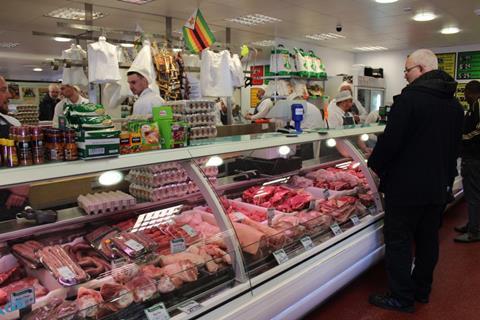National Craft Butchers has submitted its response to the National Food Strategy Review, headed by Henry Dimbleby, and is urging it to recognise that Craft Butchers are key to high streets and rural and local communities.

In its submission NCB’s technical manager, Richard Stevenson, said: “We make no apology for championing the merits of our sector as a vital and fundamental part of future food strategy which will greatly help to deliver on many of the governments desired outcomes.
“We urge the Review to recognise that craft butchers are key to our high streets and rural and local communities.” The NCB said it believed that encouraging a flourishing independent meat and livestock sector would greatly enhance:
- environmental sustainability and biodiversity
- public health
- animal welfare & disease control
- rural communities
- food security
- food quality
- consumer choice
- Craft skills and knowledge
NCB’s submission also included support for local abattoirs.
It said an adequate provision of small local abattoirs is completely fundamental to the future of quality local meat. It is also vital for animal welfare and the government’s policy to reduce journey times and process livestock as close to the point of production as possible.
"...an adequate provision of small local abattoirs is completely fundamental to the future of quality local meat"
There are only about 100 small abattoirs left in England and Wales. Currently those still in business are at crisis point with many considering closure. Urgent government action is required to preserve these remaining operators as well as encouraging new start-ups and the re-opening of mothballed plants.
Local abattoirs have closed for a variety of reasons including over-regulation and red-tape, onerous inspection regimes, low profit margins, increases in waste disposal costs and declining value in hides and skins.
Small abattoirs are hubs for turning local livestock into local meat. On average each small slaughterhouse deals with 100 local farmers in a radius of less than 35 miles. The meat is supplied to local craft butchers, pubs and restaurants or supplied back to the farmer for his farm shop or wholesaling activity, or for box schemes, farmers markets etc.
Local slaughterhouses, unlike large industrial units, can handle small groups of animals from different farming systems (sometimes from grazing regimes helping to preserve sensitive eco systems) and of rare and heritage breeds. They also give farmers an alternative route to market in times of movement restrictions. They can add value to meat through further processing into bespoke meat products. Many livestock producers prefer small abattoirs for superior craftsman dressed carcases that also avoids deterioration of meat through higher stress levels.
This story was originally published on a previous version of the Meat Management website and so there may be some missing images and formatting issues.












